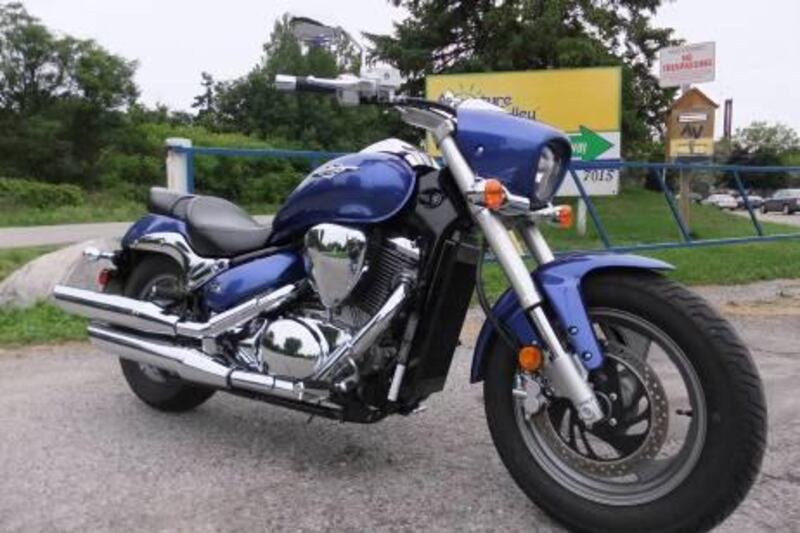Perhaps it's just age. In fact, I'm sure it's all about age; the decrepit bones, the less-than-limber lower lumbars and simply the realisation that, at some point in time, there's more to life - or at least motorcycle riding - than popping wheelies and alienating neighbours.
So, I have a confession. Although I must evaluate all the motorcycles I test based on their performance, quality, reliability and handling, and although I still get all tingly at the mere prospect of testing a superbike at a racetrack, the attribute most important for me to buy a motorcycle is its seating position.
Give me a comfortable distance between handlebar, seat and footpeg and I will be a happy camper as long as its performance passes basic muster. The actual specifics of the position are variable and seemingly random, the actual evaluation more of the knowing-it-when-I-see-it variety than something that can be measured. That's why I can ladle praise on Triumph's new adventure-touring Tiger 800 in the same breath as I express my undying love for my old Honda CB1100RC's racer(ish) clip-ons.
And Suzuki's latest M50. Yes, you could have bowled me over with a feather. The M50 is, after all, a cruiser, not the kind of motorcycle suited to those of wonky backs and sporty dispositions. The handlebar sits on a riser and the footpegs are splayed forward, neither attribute conducive to long-term comfort. Stylish? Yes. Comfortable? No.
But the trick is that the M50 doesn't make a radical statement in either regard. Though rakishly forward, the rider's footpegs are not impossibly so (as with Harley's first V-Rods), nor is the handlebar ape hanger high. The result is a seating position that is both stylish and rational. Indeed, the mid-sized Suzuki is quite comfortable around town, though, like all cruisers, it'll need a windscreen if you're planning serious motorway work.
The M (as in Muscle) 50 is styled after the brutish Suzuki M109R, the GSX-R of power cruisers. Of course, with half the displacement (at 805 cubic centimetres it's relatively small by V-twin cruiser standards), the M50 doesn't have the socket-wrenching torque of its larger sibling. But it is a willing little steed, its 49-and-something cubic inches of 45-degree V-twin displacement twisting out enough torque for cruiser authenticity. Acceleration in the lower gears is brisk, though things start tapering off above 150kph. By that time, as I have mentioned, you'll need a windscreen or the forearms of Thor.
The M50's chassis ascribes to that same comfortable performance. The forks, for instance, are of the inverted type with thick 41mm stanchions, which makes them almost overkill for a small-displacement cruiser. Unlike the similar items of sport bikes, however, the M50's front suspension is not adjustable. It really isn't a bother as the Suzuki has neither the speed nor the ground clearance to tax its already over-engineered front suspenders. The same applies in the rear, where its monoshock rear swingarm is plush without being wallowy.
And unlike some of the fat-tyred cruisers that are becoming more popular, the M50 steers quite linearly and requires no extra effort to force it into corners. The M50 really doesn't feel like a cruiser at all and, were it not for that paucity of ground clearance and the relative lack of grip, it would be great for terrorising twisty roads. The entire sensation of back-road competence is no doubt aided by its 265kg kerb weight, again modest by cruiser standards.
Back to the comfort thing for a moment. The same suspension that renders the M50 competent through corners also does a relatively good job at isolating the rider from the road. Here again, that relatively modern front fork does a better job than the monoshock rear. In fact the front suspension is downright cosseting over even the largest of potholes while the rear, "hard-tail look" single shock struggles a little more over big bumps.
It also helps the comfort equation that the M50's seat is broad and relatively flat. Throw a set of saddlebags over the M50's rear seat and bolt a wind-cheating windscreen to the front fork and I'd be happy to put this Suzuki on the road to some distant horizon.
Another thing Suzuki has improved on over the years is its build quality. In the M50, paint is top quality, the chrome is deep — even if some of it is plastic — and lustrous and things such as cable routing have been tidied up compared with Suzukis of yore. If you are looking for something stylistic to rag on about, consider the general architecture of the engine. Like all things Japanese, it's an orderly — as in well-organised — thing, with no rough edges or jutting buttresses. The only problem is that cruiser riders like their engines to look mechanical and, if Harley-Davidson's success is anything to go by, that means a lot of uneven surfaces and metal crevasses rather than the ginormous homogeneous side covers the M50 wears. Other Asian cruisers — Kawasaki comes to mind — suffer the same malady. Somehow, it makes the M50's engine look like it was designed by computer, rather than man, an attribute not popular among the cruiser set.
However, it's only a minor quibble for a motorcycle that surprised me with its competency.
The M50 is only one of two relatively small-displacement Japanese cruisers — the other being the Honda Fury — that I would wholeheartedly recommend. And not just because it fits me like a well-tailored suit.






